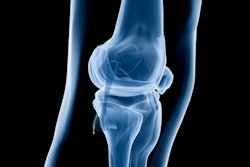"My presentation ... [is] a retrospective study aimed at determining the association between geniculate artery flow on admission CTA and limb salvage outcomes in patients with lower extremity arterial injury," wrote Dr. Sean Johnston, from the University of Texas Medical School, in an email to AuntMinnie.com.
The study looked at records for patients with lower extremity injury who had undergone CT angiography. The researchers recorded patient demographics, injury severity score, mechanism of injury, and popliteal and GA flow, and compared them to eventual limb salvage outcomes. The results showed that amputation rates tended to increase as the number of perfused geniculate arteries decreased.
"Our research showed that patients with increased numbers of perfused geniculates had improved rates of limb salvage; as such, geniculate collateral circulation may have an important role in limb salvage after lower extremity vascular injury," said Johnston, who will detail the effects of GA perfusion and other factors on limb salvageability.



















